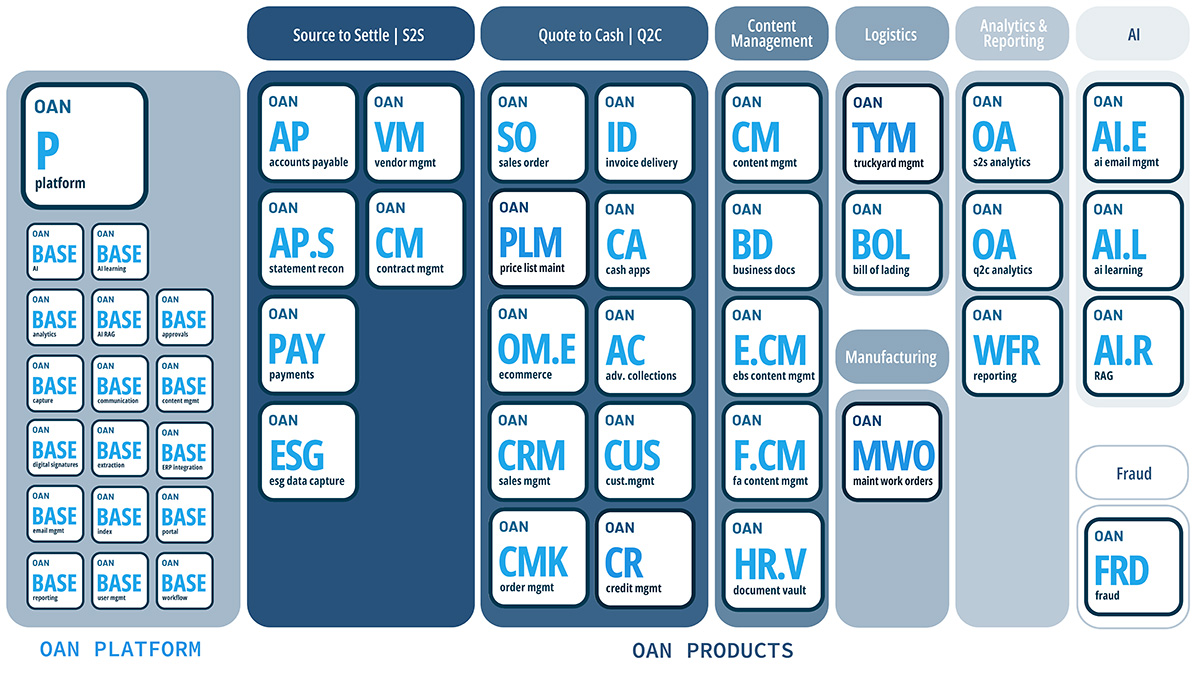For organizations focused on growth and operational excellence, paying invoices on time is not enough—you also need to do it securely, accurately, and in full compliance. Internal controls within the accounts payable (AP) process are essential for minimizing risk, catching errors early, and reducing fraud exposure.
At oAppsNET, we understand that internal controls aren’t just about prevention—they’re about building a scalable, digital-first infrastructure that supports efficiency and accountability at every stage. Here’s your practical guide to understanding the types of AP internal controls, why they matter, and how to implement best practices that position your business for success.

Why Internal Controls Matter in Accounts Payable
According to J.P. Morgan’s 2022 AFP Payments Fraud and Control Survey, 71% of organizations experienced a payment fraud attempt in 2021. This statistic should be a wake-up call for AP departments relying on outdated systems and manual processes. Internal controls aren’t just a safety net but a strategic asset, providing a sense of security and control.
Adequate AP internal controls:
- Reduce the risk of internal fraud or collusion
- Prevent duplicate or erroneous payments
- Maintain a clear audit trail
- Enhance compliance with financial regulations
- Improve transparency in invoice approvals and payment timing
With the right digital tools in place, such as those offered by oAppsNET’s ERP and DevOps-enabled platforms, your AP department can transform from a potential liability into a fortress of security and efficiency.
Now that we understand the importance of internal controls in accounts payable, let’s delve into the three types of controls that can help you build a secure and efficient AP process.
1. Obligation to Pay Controls
These controls verify that your organization is paying only for legitimate, received goods and services.
Key practices:
- Purchase Order Approval: Purchase requisitions must go through a structured approval workflow, ensuring spend is tracked and budget-compliant before a purchase order is issued.
- Invoice Approval: Authorized approvers validate the accuracy of invoices before payments are released.
- Matching Processes: Use two-way (invoice to PO) or three-way (invoice to PO to receipt) matching to confirm goods/services were delivered as ordered.
- Duplicate Auditing: AP automation platforms can flag duplicate entries before they’re paid—reducing human error and financial leakage.
Pro tip: Automating this process through ERP-integrated tools like those supported by oAppsNET dramatically reduces manual review time.
2. Data Entry Controls
Once a valid invoice is received, it must be correctly recorded in the system—without introducing new errors.
Two primary approaches:
- Record Before Approval: Enter invoices into your system early, providing a record for cross-checking during later approvals. This proactive approach ensures you are always prepared for the next stage of the process.
- Record After Approval: Delay entry until after verification to minimize false entries or duplicates.
Whether you choose early or late entry, ensure your systems are integrated to allow visibility across stages—and can flag potential issues automatically.
3. Payment Entry Controls
Even with perfect approvals and clean data, errors or fraud often occur in the final payment process.
Best practices:
- Segregation of Duties (SoD): Separate the roles of invoice approval, payment initiation, and reconciliation. SoD is a cornerstone of fraud prevention.
- Manual & Dual Check Signing: Especially for large payments, require multiple sign-offs and avoid signature stamps.
- Track Check Numbers: Maintain a running log of issued checks to quickly detect discrepancies.
- Secure Storage: Lock physical checks and signature plates to prevent unauthorized access.
- Vendor Info Validation: Always confirm sensitive updates—like new bank accounts—directly with vendors before processing.

Best Practices for Strengthening AP Internal Controls
1. Centralize Documentation Digitally
Use an AP Document Management System to store and index invoices, purchase orders, and receipts in a centralized location. This supports audit readiness and allows you to assign user roles for enhanced transparency.
2. Build a Strong Vendor Enrollment Process
Verify bank details and supplier information before approving any vendor. Implement a review process for any vendor changes—especially banking updates—to prevent fraud.
3. Use a Segregation of Duties Matrix
Define who handles what. Ensure no single individual can control the end-to-end payment cycle. For example:
- Vendor data management should be separate from invoice approvals.
- Payment reconciliation should be assigned to a third person, not the one issuing payments.
4. Go Digital and Paperless
Paper checks introduce delays and risks. Moving to electronic payments and paperless invoicing accelerates processing time, reduces lost documents, and strengthens your audit trail.
5. Automate Where It Counts
Full AP automation reduces manual work, flags discrepancies in real-time, and integrates seamlessly with your existing ERP system. With oAppsNET’s proven automation capabilities, you can eliminate unnecessary touchpoints and empower your team to focus on higher-value tasks.
Turn AP Controls into a Competitive Advantage
At oAppsNET, we believe strong AP internal controls are more than a compliance measure—they’re a gateway to smarter operations. By modernizing your accounts payable infrastructure, you reduce friction, increase accuracy, and build trust that improves vendor relationships and internal performance.
Whether you’re just beginning to evaluate your current processes or looking to upgrade to a fully automated, DevOps-ready platform, our team can help. We bring over 25 years of experience in Oracle solutions and custom automation to help businesses like yours secure, streamline, and scale every aspect of financial operations.
Ready to make AP your strongest link, not your weakest? Let’s talk.

